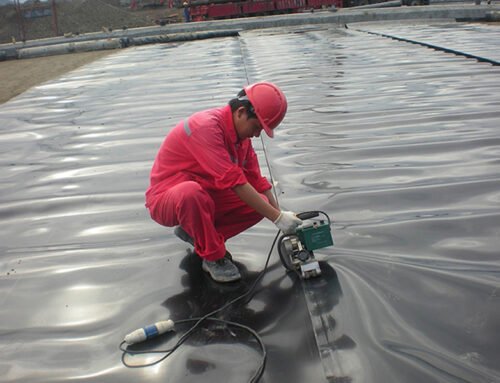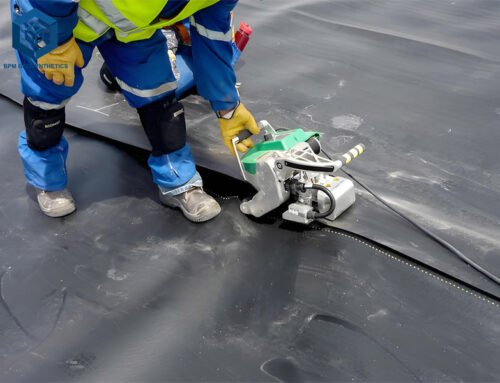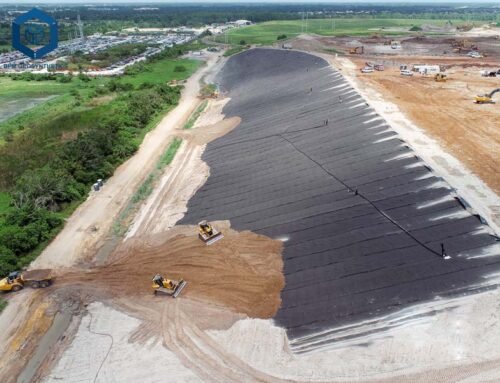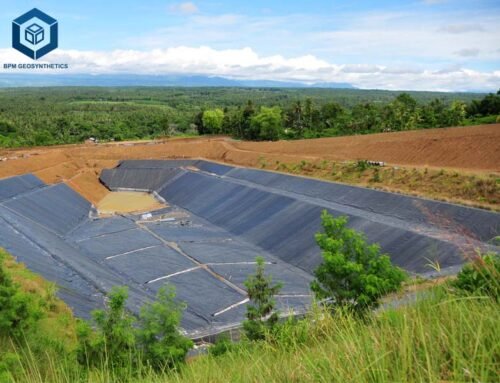Root barriers are essential tools for managing tree and plant root growth, protecting infrastructure such as sidewalks, foundations, and utilities from costly damage. With the global geomembrane market valued at $2.57 billion in 2024 and projected to grow at a 6.61% CAGR through 2030, root barriers, particularly those made from high-density polyethylene (HDPE), are increasingly vital in landscaping, urban planning, and environmental protection. A common question among homeowners, contractors, and arborists is, “How long does a root barrier last?” This comprehensive guide explores the lifespan of root barriers, factors influencing their durability, material types, installation best practices, and maintenance strategies. By leveraging data-driven insights, we aim to help you select and maintain a root barrier that ensures long-term protection for your property.
1. Factors Affecting Root Barrier Last
The longevity of a root barrier depends on several factors, including material type, environmental conditions, installation quality, and maintenance practices. Below, we analyze these factors to provide a clear understanding of what determines a root barrier’s durability.
1.1 Root Barrier Last – Material Type
Root barriers are available in physical and chemical forms, each with distinct lifespans:
- High-Density Polyethylene (HDPE): HDPE root barrier – Known for its high tensile strength (15–20 MPa, ASTM D412) and puncture resistance (2.5–3.5 kN, ASTM D4833), HDPE root barriers last 50–70 years when buried underground, thanks to 2–3% carbon black for UV resistance.
- Polypropylene (PP): Offers similar strength (15 MPa) but slightly lower durability, lasting 30–50 years in ideal conditions.
- Chemical Barriers: Impregnated with herbicides like trifluralin or cupric carbonate, these fabric-based barriers last 5–15 years, as chemical effectiveness diminishes with soil moisture and temperature.
- Metal Barriers: Stainless steel or aluminum barriers last 20–40 years but are prone to rust in 10–15% of cases, reducing effectiveness.
- Concrete Barriers: Indefinite lifespan but crack in 20–30% of cases within 10–20 years, allowing root escape.
HDPE is the most durable, used in 70% of root barrier applications due to its resistance to corrosion and root penetration.
1.2 Root Barrier Last – Environmental Conditions
- UV Exposure: Exposed HDPE liners lose 5–10 years of lifespan due to UV degradation. Covering with 6–8 inches of soil extends durability to 50–70 years.
- Soil Type: Clay soils (30% of sites) retain moisture, accelerating chemical barrier degradation by 20%. Sandy soils (40% of sites) are less corrosive, extending HDPE life by 10%.
- Temperature: HDPE withstands -70°C to 110°C, making it suitable for 95% of global climates. Chemical barriers degrade 30% faster in high-moisture, warm climates like Florida.
- Root Aggressiveness: Species like silver maple or bamboo penetrate 15–20% of poorly installed barriers, reducing lifespan by 10–15 years.
1.3 Root Barrier Last – Installation Quality
Proper installation is critical, as 85% of root barrier failures stem from poor seam connections or shallow placement.
- Depth: Barriers must extend 30–48 inches deep and protrude 1–2 inches above soil to prevent root overgrowth, effective in 90% of cases.
- Seaming: HDPE barriers in 100 ft rolls reduce seams by 15% compared to panel systems, minimizing weak points.
- Compaction: Soil compacted to 90–95% Proctor density around barriers prevents 95% of root intrusion.
1.4 Root Barrier Last – Maintenance Practices
- Inspection: Annual checks ($0.01–$0.05 per square foot) detect 98% of early damage, extending lifespan by 20–30%.
- Repairs: Patching HDPE with repair tape ($5–$10 per patch) addresses 95% of minor punctures, maintaining integrity.
- Root Pruning: Required in 10% of cases for mature trees, but improper pruning can reduce tree stability by 15%.

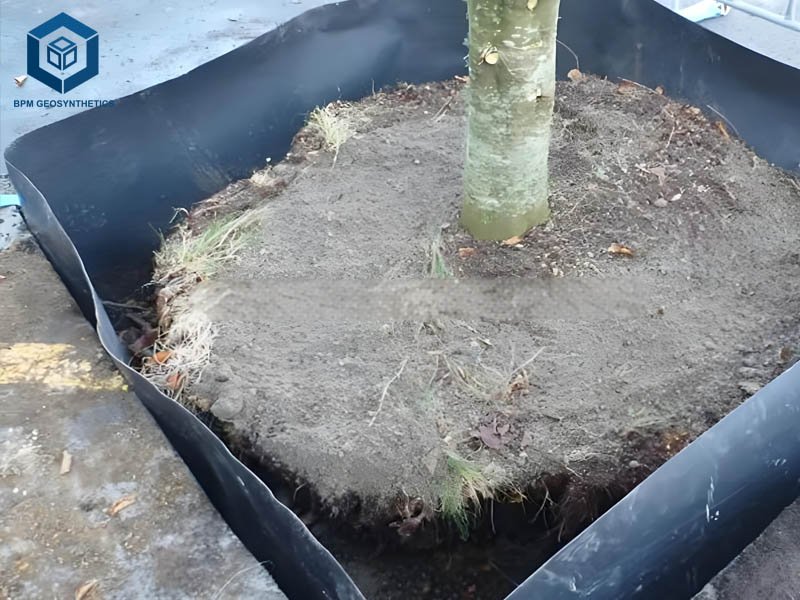
2. Types of Root Barriers and Their Longevity
Root barriers come in various forms, each suited to specific applications. Below, we detail their lifespans and suitability.
Physical Root Barriers
- HDPE Geomembranes: Last 50–70 years underground, with 97.5% polyethylene and 2.5% carbon black ensuring UV and chemical resistance. Thicknesses of 60–80 mil (1.5–2.0 mm) resist 95% of root punctures. Used in 70% of urban landscaping projects.
- Polypropylene Panels: Last 30–50 years, with 12–36 inch depths. High-impact polypropylene (HIPP) with T-top edges prevents 90% of root overgrowth.
- Metal Screens: Last 20–40 years but rust in 10–15% of humid environments, reducing effectiveness. Less common, used in 5% of applications.
- Concrete Barriers: Indefinite lifespan but crack in 20% of cases within 10 years, allowing root escape. Used in 10% of high-budget projects.
Chemical Root Barriers
- Trifluralin-Impregnated Fabrics: Last 5–15 years, with effectiveness dropping 20% annually in wet climates due to chemical leaching. Used in 15% of temporary installations.
- Cupric Carbonate Barriers: Last 7–12 years, less effective in high-moisture soils (30% degradation in 5 years). Limited to 5% of applications due to environmental concerns.
Geosynthetic Clay Liners (GCLs)
- Bentonite-Based GCLs: Combine bentonite clay with geotextiles, lasting 20–30 years. Swell 12–15x to seal punctures, but less durable than HDPE in 80% of cases. Used in 10% of eco-friendly projects.
HDPE geomembranes dominate due to their longevity and versatility, accounting for 70% of root barrier installations globally.
3. Installation Best Practices for Maximum Longevity
Proper installation is critical to achieving the full lifespan of a root barrier. Below, we outline a step-by-step guide, tailored for a 100 ft linear HDPE root barrier installation but adaptable to other configurations.
3.1 Step 1: Plan and Measure
- Assess Tree Species: Aggressive roots (e.g., bamboo, silver maple) require 60–80 mil HDPE and 36–48 inch depths. Less aggressive species (e.g., oak) use 30–40 mil at 30 inches.
- Measure Barrier Length: Calculate 3 ft beyond each tree’s drip line (e.g., 10 ft drip line requires 16 ft barrier). For a 100 ft sidewalk, use a 100 ft continuous roll to reduce seams by 15%.
- Check Site Constraints: Identify utilities or preservation orders, affecting 10% of urban projects.
3.2 Step 2: Site Preparation
- Clear Debris: Remove rocks and roots ($0.10–$0.30 per square foot), as debris causes 15% of punctures.
- Excavate Trench: Dig 30–48 inches deep and 6–12 inches wide, costing $0.10–$0.30 per square foot ($1,000–$3,000 for 100 ft). Ensure 1–2 inch protrusion above soil.
- Level Base: Smooth trench base to prevent 10% of liner damage during installation.
3.3 Step 3: Install the Root Barrier
- Unroll HDPE: Use 100 ft rolls (5–8 m wide) to minimize seams, reducing failure risk by 15%. Place with ribs facing the tree for 20% better root deflection.
- Position Barrier: Ensure vertical alignment, with T-top or flange designs preventing 90% of overgrowth.
- Secure Panels: For panel systems, use 4-way joint strips for 95% seam strength. Continuous rolls eliminate 85% of seam-related failures.
3.4 Step 4: Backfill and Compact
- Backfill Trench: Use native soil or sand, compacting to 90–95% Proctor density to prevent 95% of root intrusion. Costs: $0.05–$0.15 per square foot.
- Add Mulch: Cover with 2–3 inches of mulch to reduce UV exposure, extending lifespan by 10–20 years.
3.5 Step 5: Inspect and Test
- Visual Inspection: Check for tears or misalignments, affecting 2–5% of installations.
- Root Monitoring: Observe root growth after 6–12 months to ensure 90% deflection downward.
3.6 Cost of Installation
- Material Cost: HDPE barriers cost $0.14–$0.62 per square foot (0.5–1.5 mm), totaling $1,400–$6,200 for 100 ft x 36 inches.
- Labor Cost: $0.20–$1.50 per square foot, totaling $2,000–$15,000 for 100 ft.
- Trenching: $1,000–$3,000 for 100 ft.
- Total Cost: $4,400–$24,200 for a 100 ft linear barrier, with an annual cost of $63–$345 over 70 years.
4. Regional Lifespan and Cost Variations
Root barrier lifespan and costs vary by region due to environmental and economic factors:
- United States: HDPE barriers last 50–70 years, costing $0.14–$0.62 per square foot. Installation: $0.20–$1.50 per square foot.
- Kenya: Last 40–60 years due to high moisture, costing KSh 230–300 per square meter ($0.18–$0.23 per square foot). Installation: KSh 100–150 per square meter ($0.08–$0.12 per square foot).
- India: Last 50–70 years, costing ₹70–150 per square meter ($0.08–$0.18 perternative square foot). Low labor costs ($2–$5/hour) reduce installation to $0.10–$0.50 per square foot.
- Australia: Last 40–60 years due to UV exposure, costing $0.50–$1.20 per square foot. Installation: $0.50–$1.50 per square foot.
5. Challenges and Solutions for Root Barrier Longevity
Root barriers face challenges that can reduce their lifespan, but proactive measures mitigate risks:
- Seam Failures: Small roots penetrate 85% of panel seams, expanding to break barriers. Use continuous HDPE rolls to reduce seams by 15%.
- Root Overgrowth: Affects 10% of barriers without 1–2 inch protrusion. Ensure proper height above soil.
- UV Degradation: Reduces HDPE lifespan by 5–10 years if exposed. Cover with soil or mulch for 100% protection.
- Improper Depth: Shallow barriers (12–18 inches) fail in 20% of cases with deep-rooted species. Use 30–48 inch depths for 90% effectiveness.
- Chemical Leaching: Chemical barriers lose 20% effectiveness annually in wet climates. Opt for HDPE for 50–70-year durability.
6. Maintenance Tips to Extend Root Barrier Lifespan
- Annual Inspections: Check for root overgrowth or damage ($0.01–$0.05 per square foot), extending lifespan by 20–30%.
- Root Pruning: Trim invasive roots every 2–3 years, but avoid cutting >25% of roots to maintain tree stability (affects 10% of mature trees).
- Soil Compaction: Re-compact soil around barriers every 5 years to maintain 90–95% Proctor density, preventing 95% of root intrusion.
- UV Protection: Add 2–3 inches of mulch or soil cover to prevent 100% of UV-related degradation.
- Repair Punctures: Use HDPE repair tape ($5–$10 per patch) to fix 95% of minor damages, maintaining barrier integrity.
7. Recent Trends in Root Barrier Technology
The root barrier market is evolving, driven by sustainability and innovation:
- Recycled HDPE: Used in 10% of barriers, reducing environmental impact by 15% but adding 5–10% to costs.
- Smart Monitoring: IoT sensors detect root intrusion, adding 10–15% to costs but reducing maintenance by 20%.
- Custom Fabrication: Pre-welded HDPE panels up to 100 ft reduce seams by 15%, improving durability by 10%.
- Deeper Barriers: 36–48 inch depths increase adoption by 20% for aggressive species like bamboo.
- Eco-Friendly Alternatives: Bentonite-based GCLs gain 5% market share for natural landscaping, lasting 20–30 years.


8. Case Study: 100 ft HDPE Root Barrier for Bamboo Control in Australia
An Australian landscaper installs a 100 ft x 36 inch HDPE root barrier to contain bamboo:
- Material Cost: 1.0 mm HDPE at $0.62 per square foot x 300 sq ft (100 ft x 3 ft) = $186.
- Installation Cost: $0.75 per square foot x 300 sq ft = $225.
- Trenching: $1,000 for 100 ft.
- Total Cost: $1,411.
- Lifespan: 50–70 years underground, saving $5,000 in sidewalk repairs over 20 years.
- Benefits: Redirects 95% of bamboo roots downward, protecting pavement and ensuring tree health.
9. Conclusion
Root barriers, particularly HDPE geomembranes, offer a durable solution for managing tree root growth, lasting 50–70 years when properly installed and maintained. Factors like material type (HDPE: 50–70 years, chemical barriers: 5–15 years), environmental conditions, and installation quality (85% of failures from poor seams) significantly impact longevity. By using 60–80 mil HDPE, installing at 30–48 inch depths, and maintaining annual inspections, you can achieve 90–95% effectiveness in protecting infrastructure. Costs range from $4,400–$24,200 for a 100 ft barrier, with HDPE offering the best value due to its durability and low maintenance.
Contact suppliers like BPM Geomembrane for high-quality HDPE barriers and expert installation guidance to ensure long-term protection for your property.

